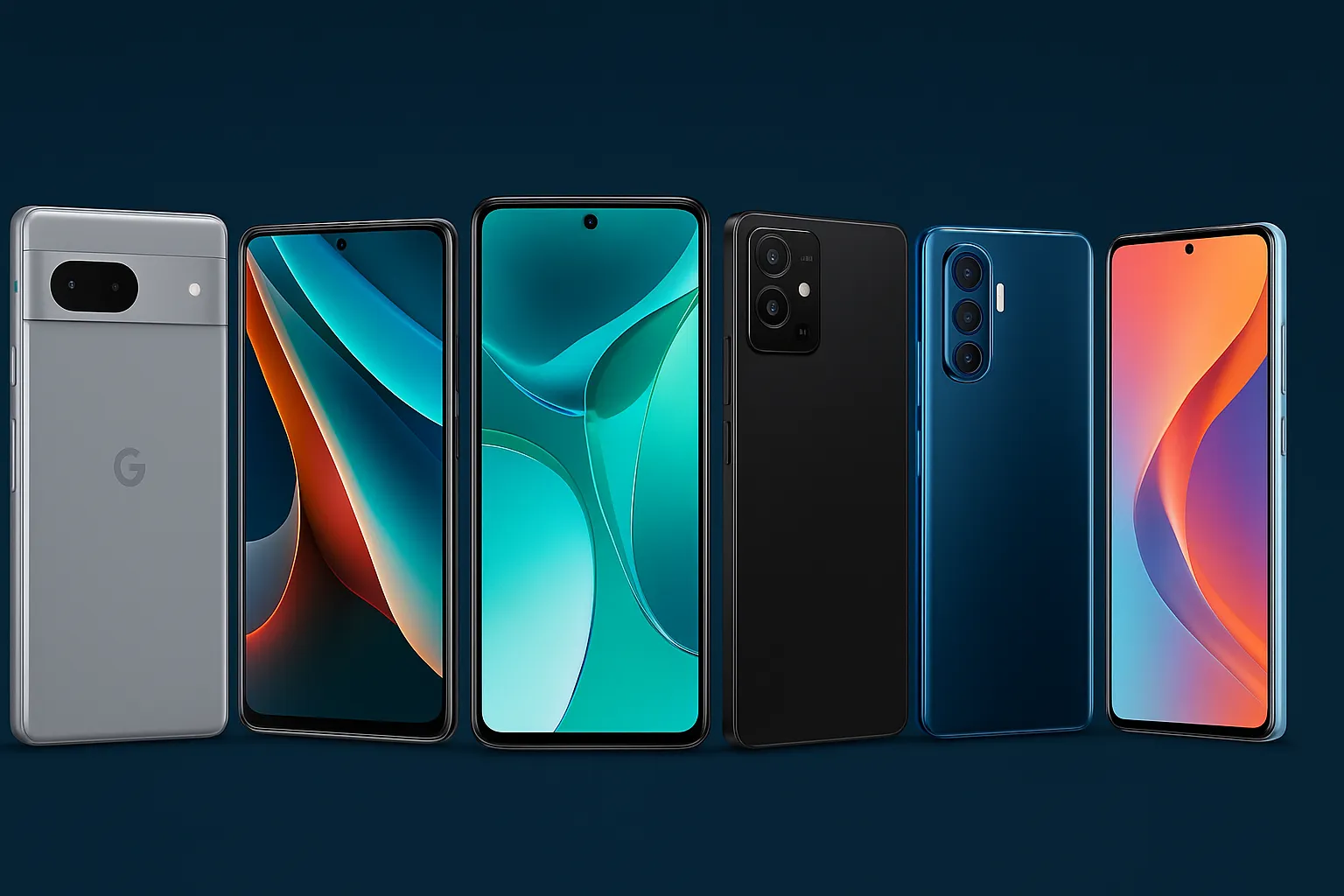Mid-range smartphones are no longer synonymous with compromise. In 2025, this segment has evolved so much that many devices offer features close to flagships—at less than half the price. But with so many options available, choosing the best mid-range phone can be overwhelming.
We analyze five of the top contenders using real-world tests for performance, battery life, display quality, photography, and software experience. We also include a modern HTML comparison table to help you see their differences clearly.
1. Real-World Testing Criteria
To determine the winner, we evaluated each phone based on:
-
Performance (benchmarks and daily use)
-
Display quality (brightness, color, refresh rate)
-
Camera (real-world photos, AI features)
-
Battery life + charging speed
-
Software & update policy
-
Value for money
2. Selected Devices
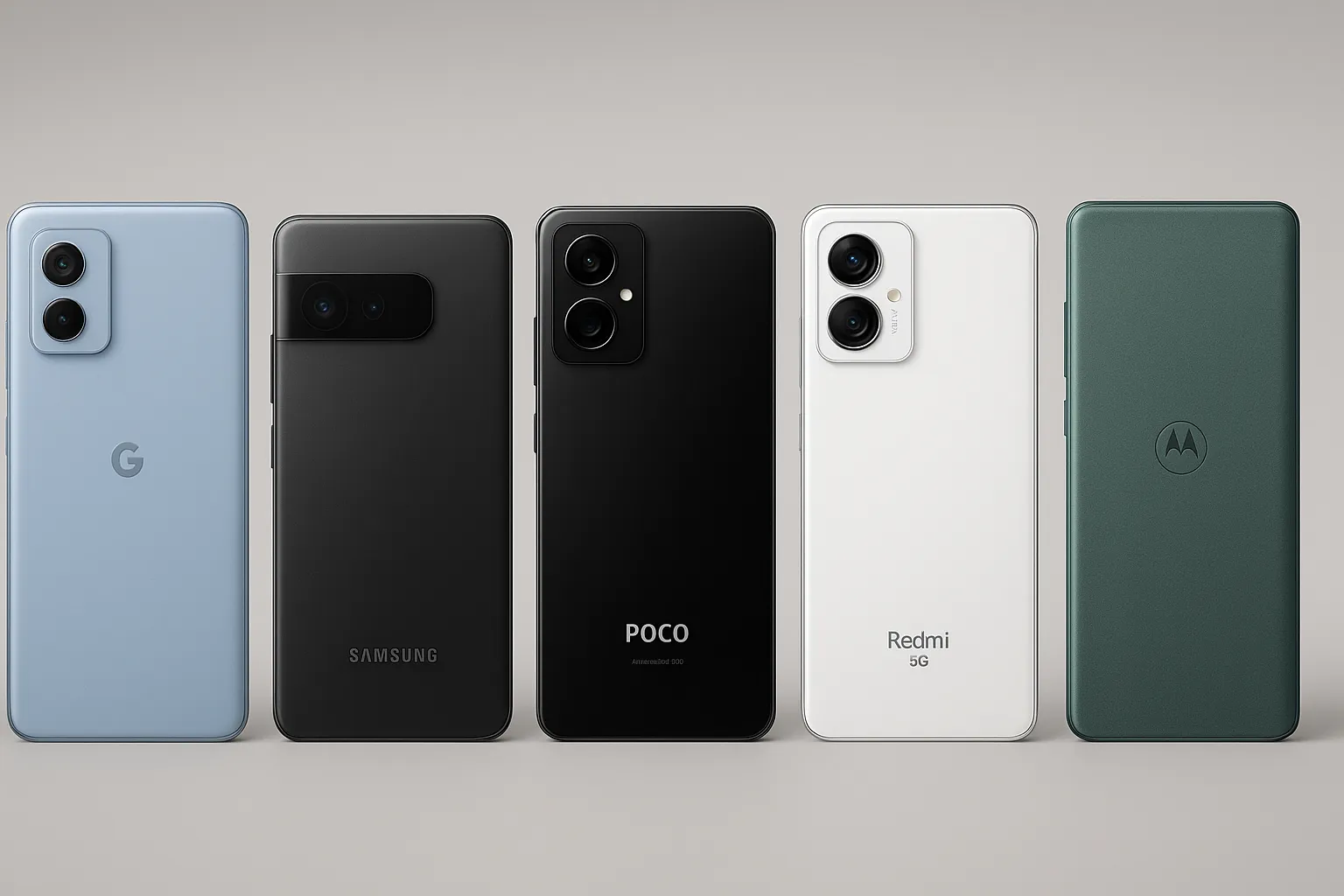
-
Google Pixel 8a
-
Samsung Galaxy A56
-
Poco F6
-
Redmi Note 13 Pro+ 5G
-
Motorola Edge 50 Fusion
Comparison Table
| Model | Processor | Display | Main Camera | Battery / Charging | Approx. Price (USD) |
|---|---|---|---|---|---|
| Pixel 8a | Tensor G3 | OLED 120 Hz (6.1″) | 64 MP + Google AI | 4490 mAh / 18W | $499 |
| Galaxy A56 | Exynos 1480 | AMOLED 120 Hz (6.5″) | 50 MP + OIS | 5000 mAh / 25W | $449 |
| Poco F6 | Snapdragon 8s Gen 3 | AMOLED 120 Hz (6.67″) | 50 MP + OIS | 5000 mAh / 90W | $429 |
| Redmi Note 13 Pro+ | Dimensity 7200-Ultra | AMOLED 120 Hz (6.67″) | 200 MP | 5000 mAh / 120W | $379 |
| Edge 50 Fusion | Snapdragon 7s Gen 2 | P-OLED 144 Hz (6.7″) | 50 MP + OIS | 5000 mAh / 68W | $399 |
Analysis by Model
Each of the selected mid-range smartphones in 2025 brings a different strength to the table. While some prioritize raw power, others focus on user experience, camera innovation, or long-term support. Below, we break down the real-world pros and cons of each model, going beyond technical specs to help you understand what they’re really like to use day-to-day.
Because in the mid-range world, it’s not just about numbers—it’s about balance, usability, and value.
Pixel 8a
![]()
User experience is excellent thanks to stock Android and exclusive AI tools. Its camera is the best for computational photography, but the slow 18W charging might turn off some users.
Pros: 7 years of updates, advanced AI, excellent camera
Cons: Slow charging, relatively small screen
Galaxy A56
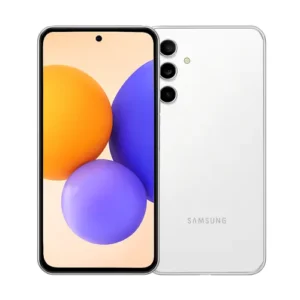
A perfectly balanced phone: great AMOLED display, clean design, long-term support, and solid One UI features. Not the most powerful, but reliable for daily use.
Pros: AMOLED screen, One UI, 4 years of updates
Cons: Average performance compared to Snapdragon rivals
Poco F6
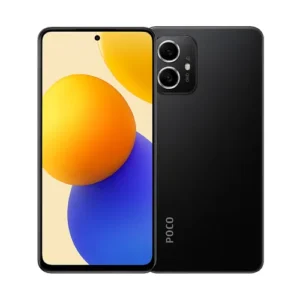
This is the raw performance king in this lineup. It’s ideal for gamers and power users. However, it doesn’t shine in photography or software refinement.
Pros: Outstanding speed, 90W charging
Cons: Heavy UI, average camera quality
Redmi Note 13 Pro+ 5G
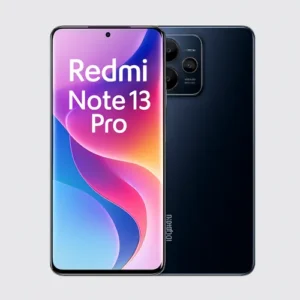
A spec-lover’s dream: curved display, 200 MP camera, and ultra-fast 120W charging. Feels like a flagship for a mid-range price.
Pros: Flagship-level specs, premium look
Cons: MIUI may not appeal to everyone
Motorola Edge 50 Fusion
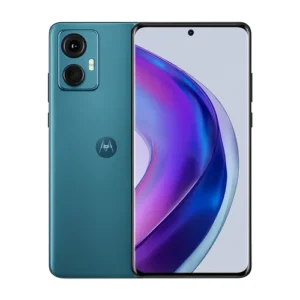
A surprise contender with a 144 Hz smooth display and minimalist design. Near-stock Android and fast charging make it appealing, though it lags slightly in raw performance.
Pros: Elegant design, clean UI, fast and fluid display
Cons: Limited performance under pressure
Which Is the Best Mid-Range Phone in 2025?
It depends on your priorities:
-
Best for photography and clean software: Pixel 8a
-
Best for balanced specs and long-term support: Galaxy A56
-
Best for gaming and power: Poco F6
-
Best for specs-on-paper fans: Redmi Note 13 Pro+
-
Best for design and fluidity: Edge 50 Fusion
Overall Verdict: The Poco F6 delivers the best value and raw power, but the Pixel 8a offers the most refined user experience.

